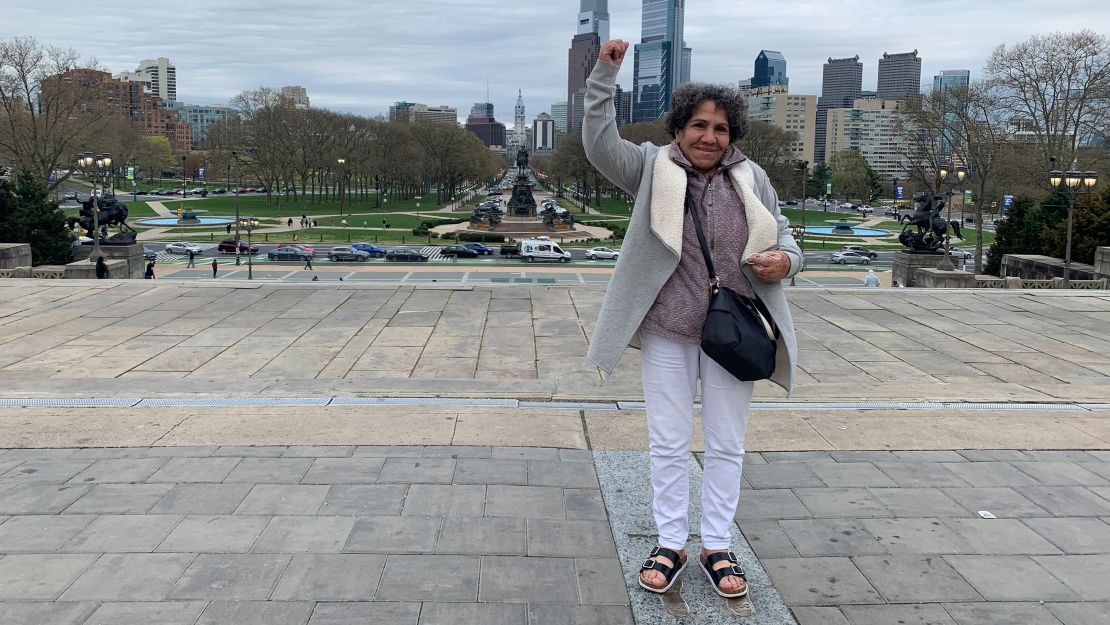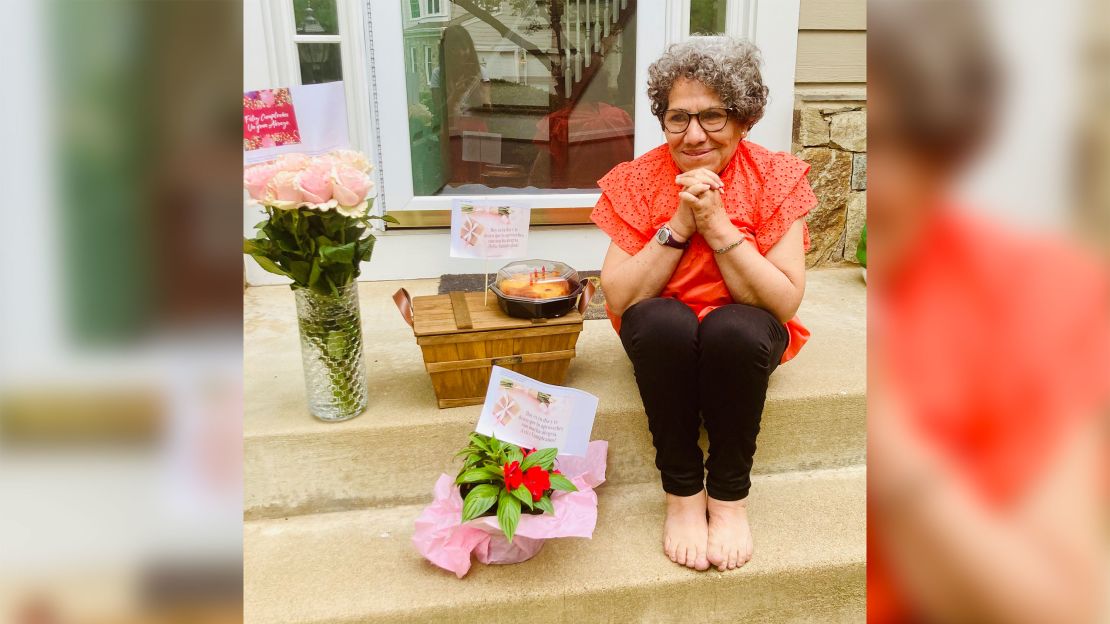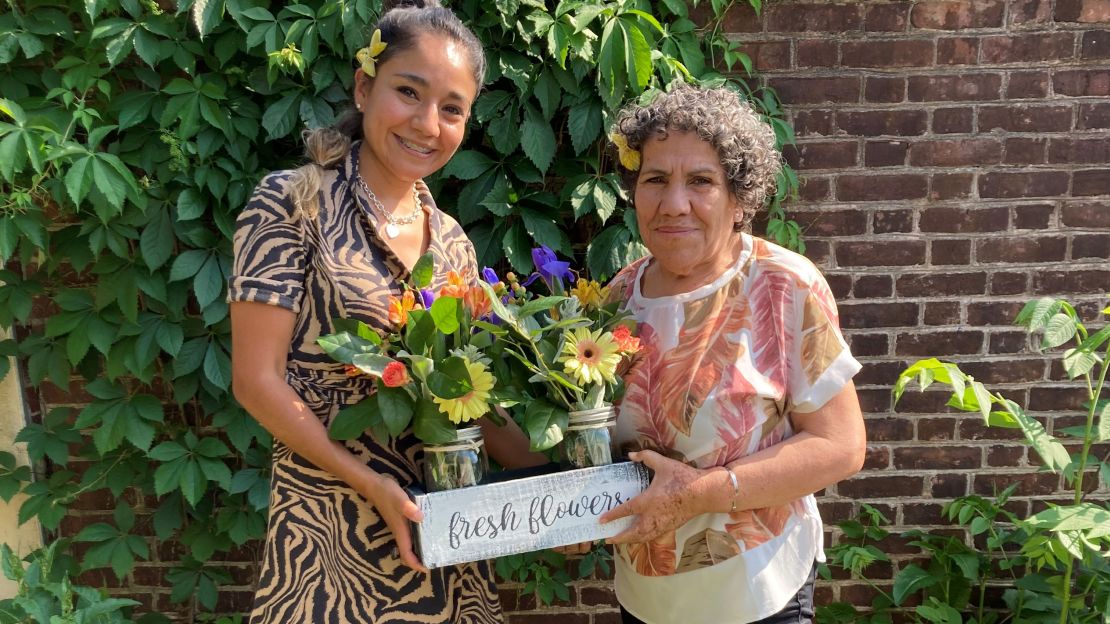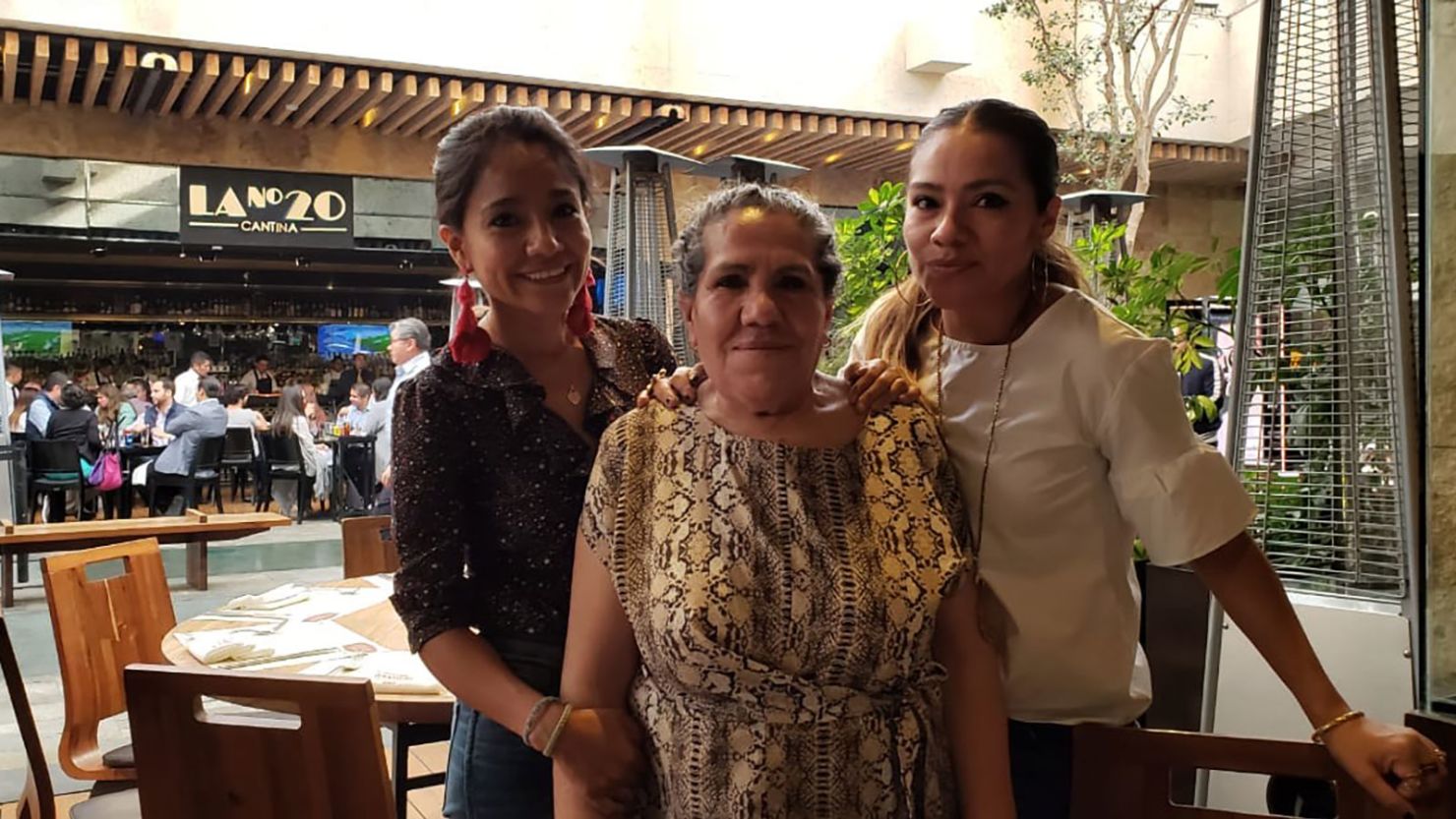Sarah Rodriguez spends most of her day multitasking as she switches from watching her mother on remote cameras to talking on video and phone calls with doctors and aides to organize proper care for the 67-year-old. The 40-year-old’s life in Virginia has been like this ever since her mom was diagnosed with younger onset Alzheimer’s two years ago.
Rodriguez has become a long-distance caregiver for her mother, Sara Gonzalez, who lives in Mexico City, Mexico. She said her mom and other family members once believed that memory loss was a normal part of aging. Before the diagnosis, Rodriguez said her mother would increasingly forget doctor’s appointments, how to count money and the little things like her favorite type of cookie. Rodriguez noticed things were worse than she thought after her mother came to visit her in Virginia during the pandemic. Gonzalez had drastic mood swings and couldn’t remember phone numbers. That’s when the reality that her mother, as she knew her, was slowly slipping away, and her mother’s Alzheimer’s was something she was forced to face.

After realizing how long it took to find her mother help, Rodriguez began serving on the Alzheimer’s Association Latino Outreach Committee to help other Latino families recognize the signs to spot the disease and its implications. The committee’s mission is to help Latinos understand and overcome cultural barriers to obtaining care — the same way Rodriguez ultimately did.
“I’m doing this because I love my mother and I really want to be an important part of her new journey,” she told CNN. “I really want to help the Latino community to show them that they are not alone and aren’t the only ones struggling with Alzheimer’s.”
Rodriquez’s journey with her mother is becoming increasingly common among Latino Alzheimer’s patients and their caregivers.
Researchers at the Alzheimer’s Association recently published a journal article, titled “Addressing the disparities in dementia risk, early detection and care in Latino populations.” The findings showed Latinos have an increased risk of Alzheimer’s and other dementias due to barriers, which include perceptions of memory loss as normal aging; limited access to high-quality care; and being underrepresentated in research and clinical trials. These barriers come at a time when the Latino population is also growing at a dramatic rate. Latinos accounted for 51.1 percent of the country’s growth, rising to almost 19 percent of the US population, according to the US Census.
The barriers also pose a threat to the health and well-being of the nation’s largest minority group. Latinos are projected to have the steepest increase in Alzheimer’s disease and related dementias in the next 40 years compared to other ethnic groups, according to the Alzheimer’s Association. Researchers estimate the disease will affect 6.3 million non-Latino whites, 3.2 million Latinos and 2.2 million African Americans by the year 2060. Although Latinos aren’t expected to have the highest number, they have the largest increase over time.
Dr. Maria Carrillo, chief science officer of the Alzheimer’s Association and an author of the report, told CNN the group wants more people to better understand the barriers that Latinos with Alzheimer’s face.
“Learning to address the challenges that Latinos face in health care and dementia is really going to be key to understanding how we can ameliorate the potential tsunami of changes that are to come and that are challenging us today across the country,” Carrillo said.
Facing multiple barriers
Despite representing about 19 percent of the population, Latinos make up less than one percent of National Institutes of Health clinical trial participants, according to the Alzheimer’s Association.
More than 10 years ago, the organization created a program that matches Alzheimer’s patients with clinical trials. Recently, the non-profit created a Spanish section of the program that includes bilingual agents, inclusive clinical trials and materials in Spanish. The report’s authors recommend that researchers adjust their recruitment strategies and standardize procedures for Latinos enrolled in clinical trials.
Rodriguez said her mom often faced language barriers and discrimination when she attended doctors appointments.
She noticed that some people either ignored her mother, spoke too slow or stopped visiting her, Rodriguez recalled.
Carrillo echoed Rodriguez’s sentiment that language and cultural barriers are often roadblocks to quality care. Another barrier is access to adequate insurance coverage.

The Alzheimer’s Association hosts an annual symposium called “Latinos and Alzheimer’s,” which brings diverse groups together to discuss research that is essential to address the health disparities that have put Latinos at a higher risk of dementia.
Carrillo said the goal for next month’s symposium is to understand what progress has been made and what else still needs to be done.
The number of Latino adults suffering from Alzheimer’s and related dementias could grow from an estimated 200,000 today to about 1.3 million by 2050, she said. That number personally worries Carrillo and makes her think about her own family’s future.
Alzheimer’s has deeply affected both her and her husband’s families. Carrillo’s mother-in-law was the third of four siblings to be diagnosed, along with her husband’s grandfather. She now worries that her husband could one day be diagnosed, along with any of their four children.
Although having a parent or sibling with Alzheimer’s doesn’t mean you will develop it, it does increase the risk, according to researchers at the Alzheimer’s Association.
“This is something that is very close to me. My children asked us how they are going to be affected and what their future is going to look like,” she told CNN. “That is an important driver for everything I do.”
The growing number of Latinos diagnosed with Alzheimer’s will have the fewest resources to manage it, according to a report by researchers at the University of Southern California and LatinosAgainstAlzheimer’s, a coalition of Hispanic organizations focusing on raising awareness of the disease as an urgent health issue.
The study, titled “Latinos & Alzheimer’s Disease: New Numbers Behind the Crisis,” showed the projection of the costs for U.S. Latinos living with Alzheimer’s through 2060. The economic impact of Alzheimer’s on the Latino community will reach a cumulative amount of $2.35 trillion by 2060, according to the study. Costs include medical bills, long-term care, unpaid informal care and earnings lost after they can no longer work.
“Families can expect to spend between $41,000 and $56,000 annually in dementia-related costs” like prescription drugs and care services, but Latino families “are largely unprepared for the financial hardship, the study found. The median household income is $38,000 for Mexican American families and $36,000 for Puerto Rican families — the two largest Latino subgroups. Since Latinos are more likely to experience poverty compared to other communities, these numbers reveal that Latino families could go into debt because of the cost of caring for their loved ones with Alzheimer’s.
In 2021, total payments for all individuals with Alzheimer’s or other dementia were estimated at $355 billion, according to the Alzheimer’s Association. Costs are also estimated to increase to more than $1.1 trillion in 2050.
Jason Resendez, executive director of LatinosAgainstAlzheimer’s and an author of the report, told CNN his organization is pushing to invest in economic policies to address the economic consequences of Alzheimer’s.
The toll it takes on caregivers
Resendez also said many caregivers for Latinos with Alzheimer’s end up being family members, as many Latinos live in multigenerational households — homes that include two or more adult generations. About 27 percent of Latinos lived in a multigenerational family home in 2016, according to US Census data.
“That impacts a family’s ability for economic security and economic mobility,” Resendez said. “It effects folks’ ability to stay in the workforce.”
Sixty-six percent of Black and Hispanic caregivers say that their caregiving responsibilities impacted their ability to work during the pandemic.
When Rodriguez became a long-distance caregiver, she put her career on hold to devote more time to caring for her mother in Mexico City. She knew if she was working full-time that she would constantly be checking her phone for updates on her mother’s care as well as calling her mother often to make sure she’s safe. Since her mother doesn’t have a pension or income, the support comes from Rodriguez’s husband and her sister, Sayra Rodriguez.

“It’s difficult because you don’t realize how much money you need until you start paying expenses,” she said. “If something happens with her in the U.S. when she visits me, we would need to pay all the expenses out of pocket.”
Rodriguez is currently running a small baking business on the side, but doesn’t think she will consider a full-time job anytime soon. She said she wants to focus on spending time with her mother and caring for her as much as she can from Virginia.
Constantina Mizis, the CEO and president of the Latino Alzheimer’s and Memory Disorders Alliance, says many caregivers need more support services that will help them financially and emotionally. She leads a nonprofit organization that aims to educate and engage Latino caregivers.
From 2018 to 2020, the organization connected with over 1,000 caregivers and persons with dementia and reached nearly 37,000 people regarding information about Alzheimer’s and the impact on the caregiver, Mizis said.
“The Alzheimer’s disease is the only illness where the person passes away twice,” Mizis told CNN. “The first time is when they don’t recognize you. There’s the emotional part of taking care of a loved one who is sick, so it can lead to a lot on the end of caregivers.”
Resendez told CNN the federal government must increase investment in communities that are disproportionately impacted by Alzheimer’s and related dementias, including areas like Miami-Dade County, Florida, and Humphreys County, Tennessee. He also said conversations regarding brain health and prevention are also vital to address the burden of Alzheimer’s, which would help spread awareness.
“As Latinos, I think we don’t understand what is happening with them, but there is a lot of information out there,” Rodriguez told CNN. “It’s better that your loved one gets the diagnosis, the medicine and the treatment. We are not alone and it’s always good to ask for help.”
